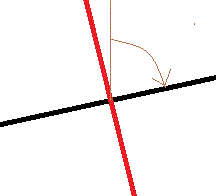| Home Login Register |
| Satellite Internet forum › HughesNet and Hughes HX VSATs › Universal LNB compatibility with different Horn |
|
Pages: 1
|
Universal LNB compatibility with different Horn(Read 5378 times) |
|
Marko
Member
★★ Offline Posts: 3 |
Apr 30th, 2011 at 10:20am
|
| Back to top |
« Last Edit: May 1st, 2011 at 9:23am by Admin1 »
IP Logged
|
|
Eric Johnston
Senior Member
★★★ Offline Posts: 2109 |
Reply #1 - Apr 30th, 2011 at 1:14pm
|
| Back to top |
« Last Edit: May 1st, 2011 at 9:23am by Admin1 »
IP Logged
|
|
Marko
Member
★★ Offline Posts: 3 |
Reply #2 - Apr 30th, 2011 at 7:19pm
|
| Back to top |
« Last Edit: Apr 30th, 2011 at 8:23pm by Admin1 »
IP Logged
|
|
Eric Johnston
Senior Member
★★★ Offline Posts: 2109 |
Reply #3 - Apr 30th, 2011 at 7:53pm
|
| Back to top |
« Last Edit: May 1st, 2011 at 11:34am by Admin1 »
IP Logged
|
|
Gary-BW
Member
★★ Offline Posts: 12 |
Reply #4 - May 1st, 2011 at 10:35am
|
| Back to top |
Tel: +44 (0) 23 9231 1118 Web: www.bentley-walker.com Email: gary@bentleywalker.com MSN: gary_del@hotmail.com
|
|
Marko
Member
★★ Offline Posts: 3 |
Reply #5 - May 3rd, 2011 at 4:51pm
|
| Back to top |
IP Logged
|
|
Pages: 1
|
Email me: eric@satsig.net
Powered by YaBB 2.5.2!
YaBB Forum Software © 2000-. All Rights Reserved.
Disclaimer, Terms of Use and Privacy Forum User Agreement Forum rules Cookie policy.



